 Robert Fairchild
Robert Fairchild
‘Tell all the people you see. Follow me. Follow me down’
Some visual artists might have slowed down and not been productive during the COVID-19 pandemic.
Not Robert Fairchild.
Fairchild, 22, graduated with his second degree from the University of Memphis, found his first art studio, and began focusing on new subject matter in his artwork.
And to make things sweeter, one of his paintings was accepted in the prestigious “62nd Annual Delta Exhibition” art show at Arkansas Arts Center in Little Rock.
“The painting was ‘Tell All the people you see. Follow me. Follow me down,’” Fairchild says. ”It’s a beginning of a Doors songs. I did that painting in undergrad, so, I guess, that was fall of 2019. And I just had it in my house since I finished it.”
The three-by-six-foot oil painting of people on a subway platform was based on a photo he took on a trip to New York in spring of 2018. He found the photo along with some other old pictures and “just made a piece about it.”
It’s not a direct copy of the photo. “This one is fairly altered. I took out a lot of excess information, like some of the patterns in the tiles and the text you would find in the subway. Stuff on the walls usually has a lot of words on it. I took that out. I thought it was kind of distracting. And I altered the colors to make it more compelling in certain areas.”
What drew him to that scene? “First of all, that was the cleanest subway platform I’d seen in New York when I was there. Also, there was no one there. There were, I mean, three people fairly close to me, and then a few people in the distance. Most of the time it’s completely full of people and over-crowded.”
“What in the world is going on? he thought — and took a picture. “It was a memorable moment because it was kind of eerie. I didn’t even think about painting at that time. I took a picture because I thought it was a good composition.”
Fairchild says he was “focused on social interaction of these figures in a public space and how everybody is on their phones. It’s also really big, so the viewers can place themselves in the painting.”
He submitted it to the show last February. In March, Fairchild found out his painting was accepted.
Usually, the show is a held at the Arkansas Arts Center. “They changed it, once all the quarantine stuff started happening. And they just decided to have a virtual show.”
It would have been nice to actually get to attend the exhibition if they had had one, he says. “Usually, they have a reception at the Arkansas Arts Center. And it’s fancy with cheese and wine, so I was looking forward to it.”
Also included in the show are works by Memphis artists Greely Myatt and Jed Jackson.
Since finishing school, Fairchild has been working — in a mask — 40 hours a week at Whole Foods Market. But, thanks to his job, he found his studio. “My co-worker has a shed in his backyard. I was talking to him about needing a studio and he was listing off places. And then he just mentioned, ‘I have a shed in the backyard. You can check that out.’ Now I’ve been painting there the last several weeks and it’s perfect. It has AC in it, so that’s all I need.”
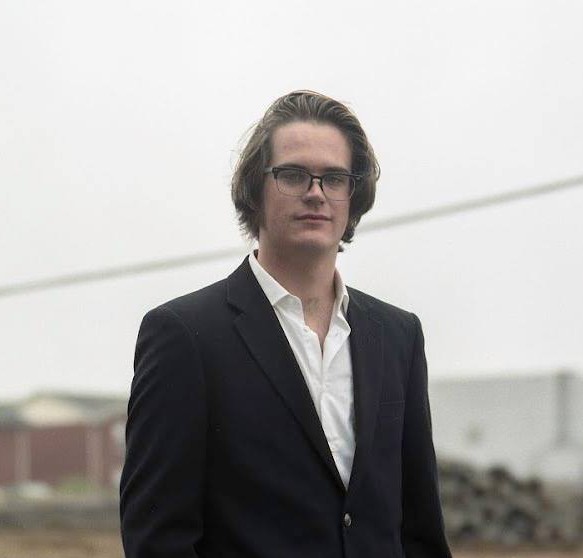
Fairchild says he’s moved to a different subject matter in his paintings. “I’ve shifted away from the figure and now I’m focused on painting landscapes, for the first time. A natural landscape. I’m really only focused on the light and the moment.
“I’m working from a photograph with very beautiful light that’s from dusk or right before the sun goes down. I’m really slowing down my process and really focusing on color, the transition of light, then creating something that’s not 100 percent one photograph. I’m using multiple references in this one to create something that is not reality but is based on reality.”
The painting, he says, is “a view from my porch. I want to share something from my experience. Something I encounter very often. I happened to be sitting on my porch. One of the days I’m not working.”
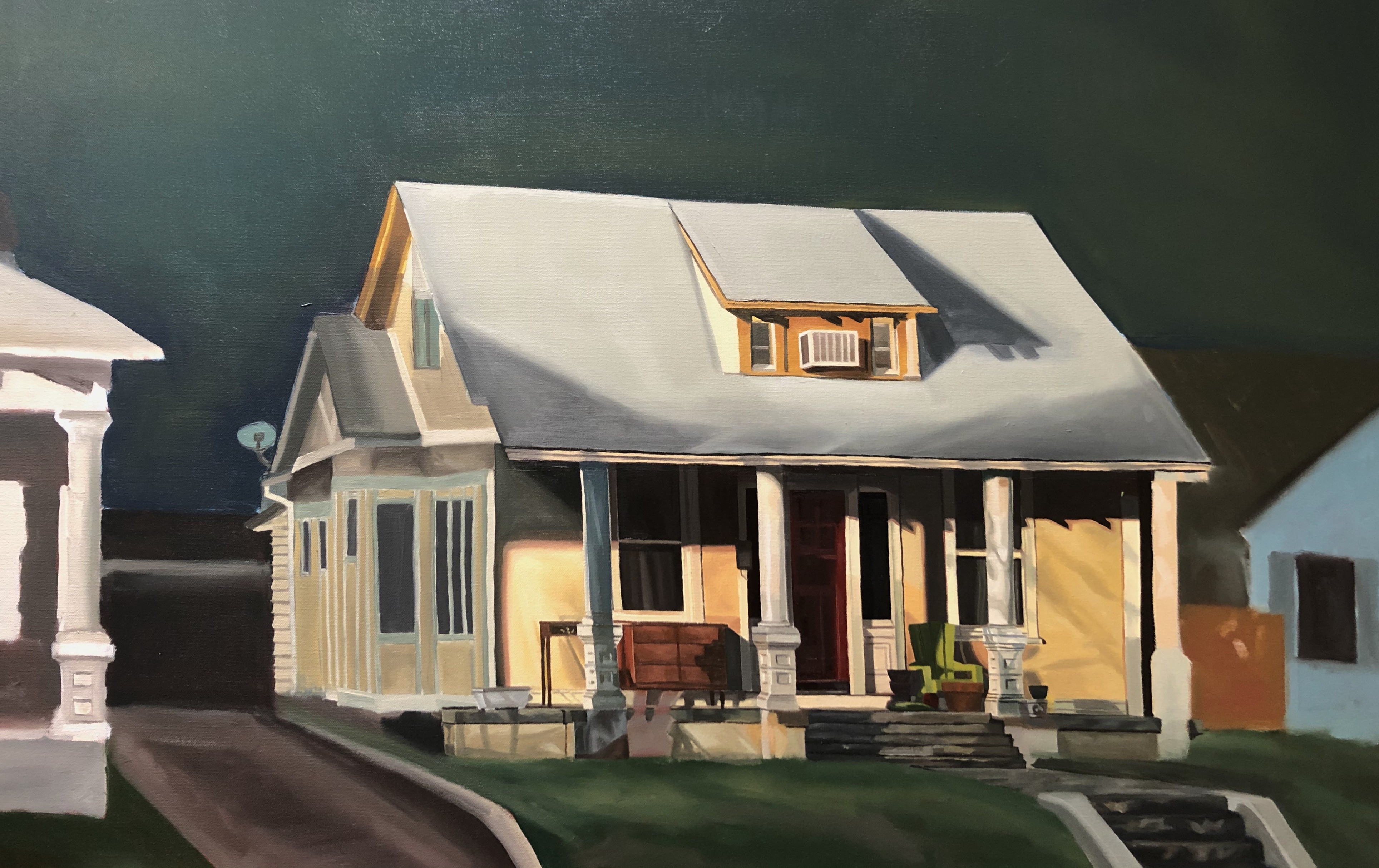 Robert Fairchild
Robert Fairchild
Work io progress
Fairchild, who took the photo about 7:00 p.m. “I took the picture ‘cause I liked the lighting. Now everybody will be able to see the view from my porch.”
He was inspired by Edward Hopper to get into landscapes. “When I was in school I was looking at books on his paintings. I’d seen his work in New York. He’d paint a store front and it would be absolutely gorgeous. Really moving. It was just a painting of nothing. So, I’m thinking I want to focus on how well I can paint a very minimal thing and make it moving to the viewer because of Edward Hopper’s work.”
Thanks to another artist, Neo Rauch, Fairchild isn’t going to abandon figurative work. “He’s a German painter and does these bizarre scenes. They’re beautiful paintings. I honestly want to start copying him next and apply my own style.
“Rauch does really strange work. His compositions have so much depth in them. And they’re all from his head. It’s a unique style. And the pieces are huge. I just got into him. My professor gave me a book on him after I had my thesis show.”
He completed school during the quarantine, which was great, he says. “I honestly hated getting up and going to class. So, I’d just wake up, join the Zoom meeting in my underwear, and get coffee and do homework at my desk at home.”
Fairchild graduated last May with a degree in journalism with a focus in creative mass media. “I got my degree in studio art with a focus on painting last fall. So, I just finished my second degree and, hopefully, I can get a job. That’s one of the things. The job hunting is not fast right now ‘cause everything is frozen. But Whole Foods treated me well, so, I’m going to take a break and get into it. Then, we’ll see.
“It’s, honestly, been wonderful spending time alone to paint. Finish school and work. That’s really all I’ve been doing.”
And, he says, “Ride my bike. Find something else to do besides be alone.”
To view, “62nd Annual Delta Exhibition,” click here: https://delta.arkansasartscenter.org/gallery-old/?fbclid=IwAR1ee6w5tU-BMdgoLz1Bwmx3FSutZNCfZKLedVJ0fu3C8wWtifMnEh6GNs8
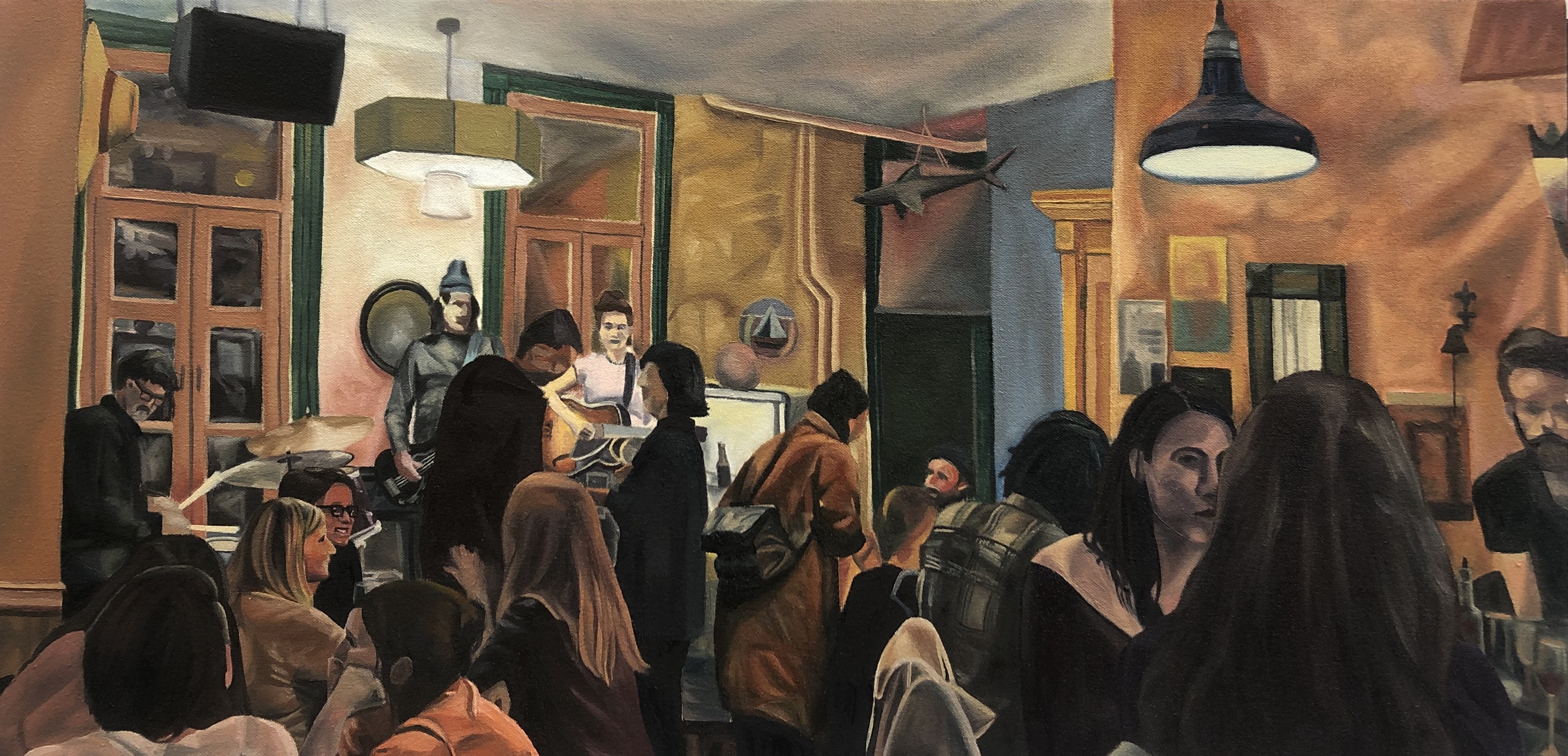 Robert Fairchild
Robert Fairchild
You Mix a Hell of a Caucasian Jackie’
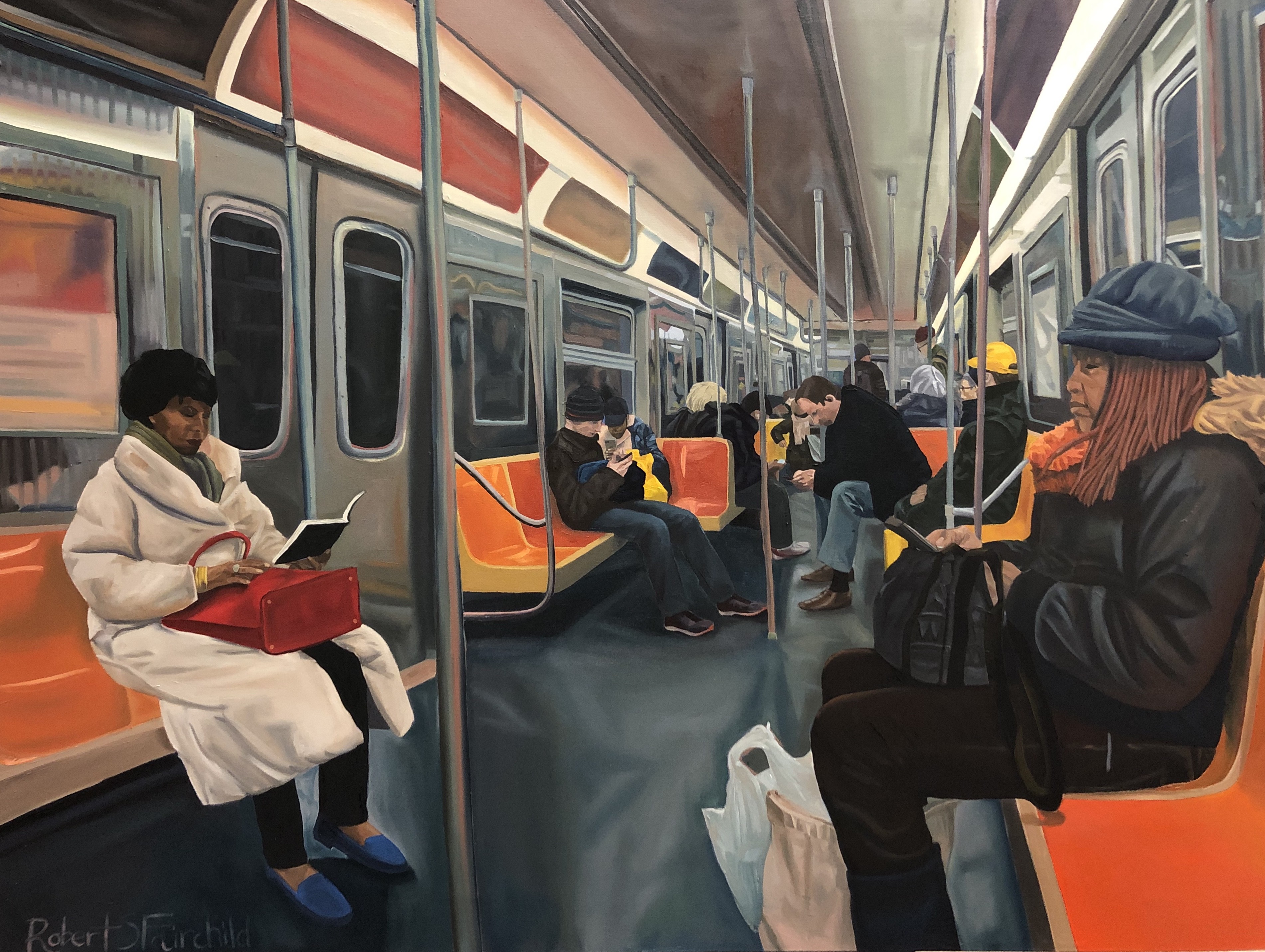 Robert Fairchild
Robert Fairchild
‘I’ve Got Buckets of Fun in My Hands’
 Robert Fairchild
Robert Fairchild
‘Dissatisfied’
 Robert Fairchild
Robert Fairchild
‘Well, I woke up this morning and I got myself a beer’
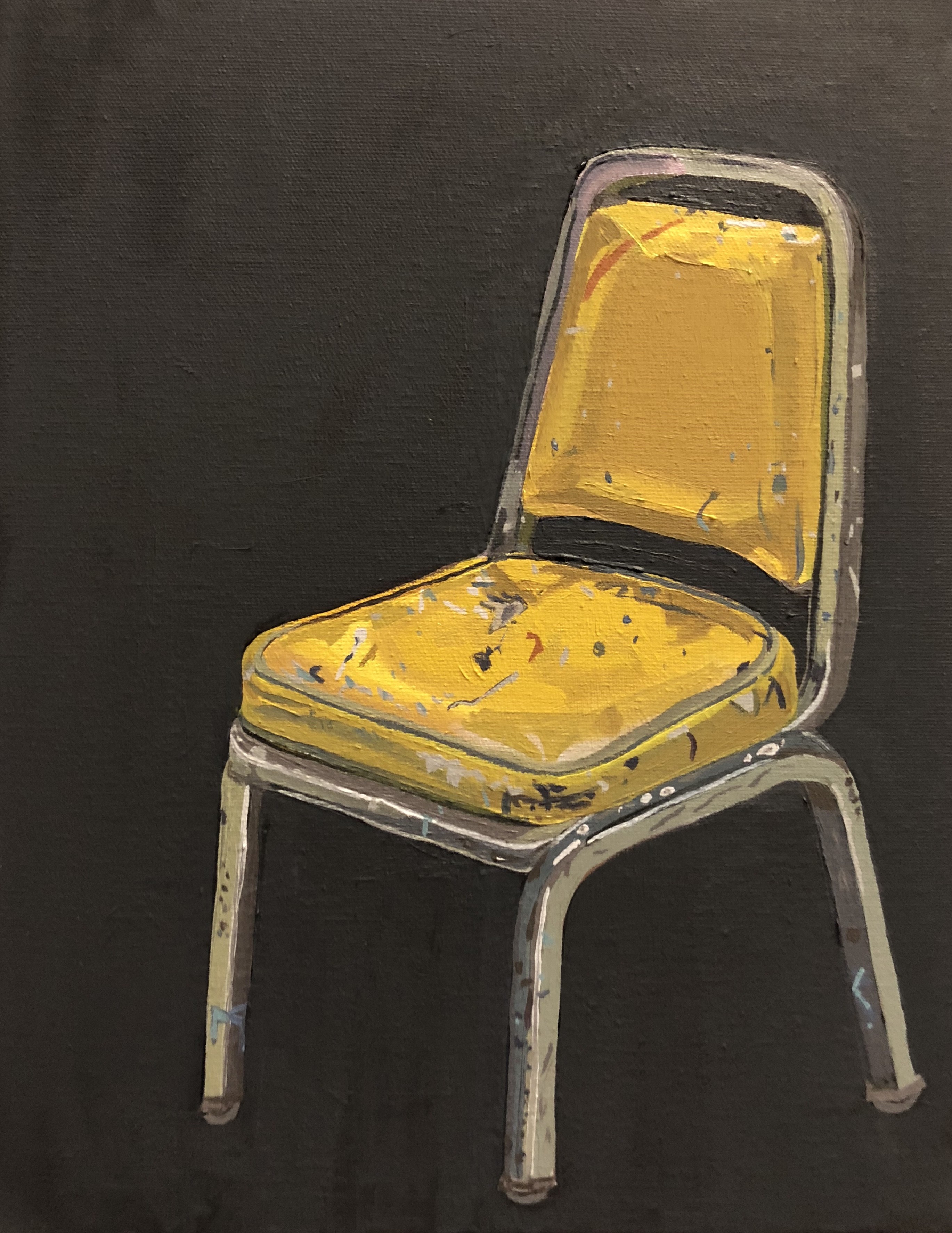 Robert Fairchild
Robert Fairchild
‘Yellow Studio Chair’
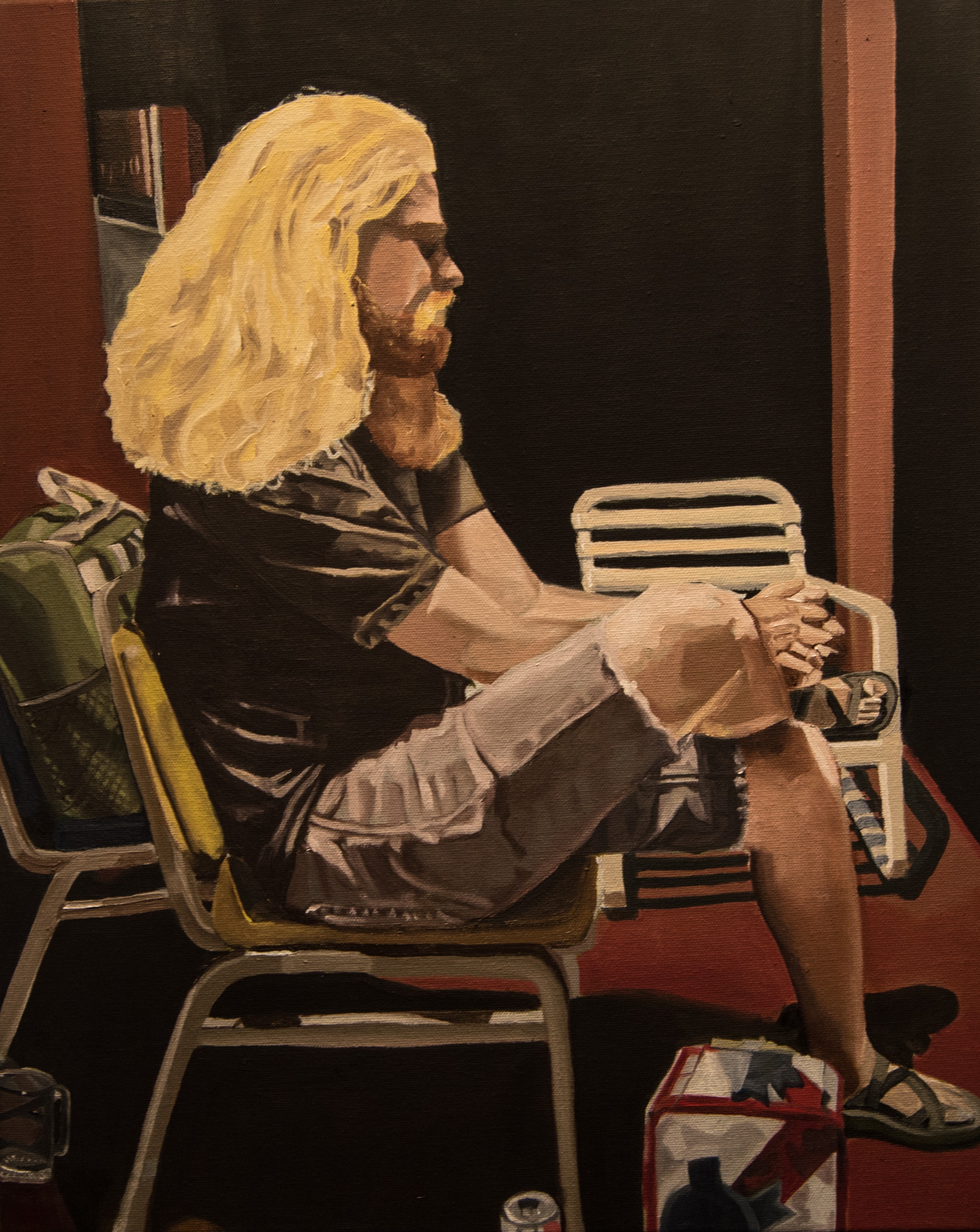 Robert Fairchild
Robert Fairchild
‘Prayer’